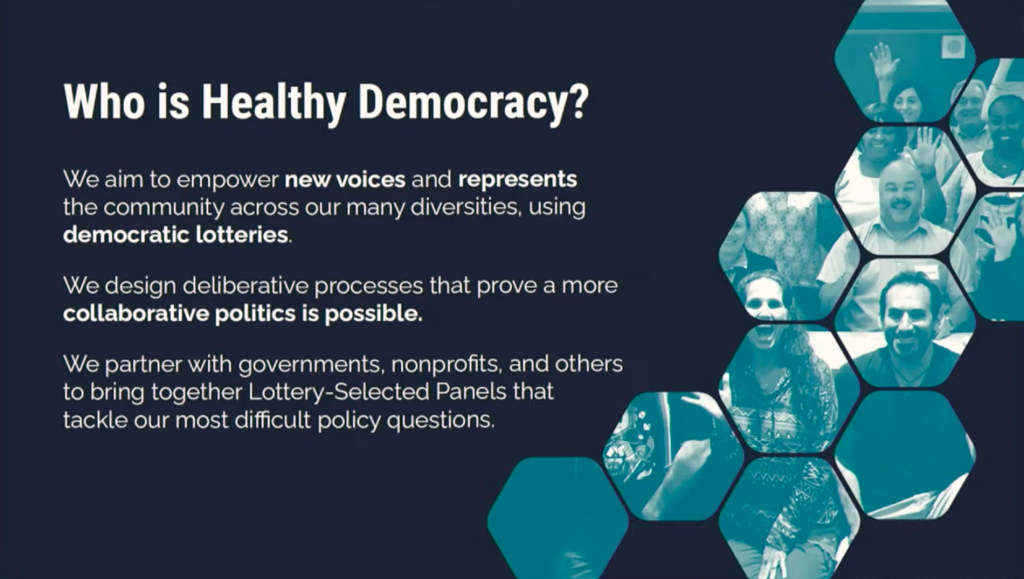At nearly four in the morning yesterday, the City Council voted 4-3 to reject a proposal for a new type of public outreach for the future land uses at the Santa Monica Airport. Instead the city will reach out to Sasaki, the firm selected by staff to do the technical design work for the land, to include a public outreach proposal when they come to the City Council for approval in November of their design plan. The vote followed a contentious debate, a long presentation by city staff, and over an hour of public testimony concerning the outreach process.
After being instructed by the Council earlier this year to seek a public outreach process that was more inclusive than the traditional public meeting process the city has used in the past. The Council was concerned that their regular process heavily favors involvement from people that are older, whiter and more affluent than the public as a while. City staff undertook a nine month process to select a group to lead the public process and selected Healthy Democracy, a federally recognized 501c(3) public charity that specializes in public outreach. Sasaki applied for both the public outreach and technical design contracts but was only selected by staff for the latter. However, the Council makes the final decision on awarded contracts of this size.
There were several areas of contention with the staff’s proposal that led to its rejection: a framing statement for the outreach that didn’t include language from Measure LC passed by voters in 2014 concerning land use on the current airport land, the “lottery panel” outreach process that uses an AI to select a panel from a pool of applicants based on demographic goals rather than previous work or political connections, whether or not such a panel could include residents of Los Angeles who live adjacent to the park, and the qualifications of Healthy Democracy.
All of these issues were dealt with at once when the Council passed a motion to reject the staff’s recommendation of Healthy Democracy and instead ask Sasaki to bring a joint proposal for technical and outreach work. If Sasaki brings a proposal that is accepted, it shouldn’t impact the overall timing of the outreach process as outreach wouldn’t begin until after the design team was formally accepted by the city. Should it be rejected, staff would have to start the process over to select consultants for public outreach.
While the Council didn’t technically end the possibility for a lottery system, Healthy Democracy was the only group that put forward such a proposal from the eight groups that responded to the “Request for Proposal” from the city and the only group from the twenty eight that responded to the city’s “Request for Qualifications” (RFQ).
It is more than understandable that both residents and the Council would be concerned with a new type of public outreach proposal for such a large project as the future land use for 227 acres of land. Speaking for the community group Northeast Neighbors, Tricia Crane laid out some of those issues: that a lottery works best when the impacts are widely felt which might not be the case here, that expertise to understand some of the more complex issues could be excluded from the body that makes the recommendation to Council, and that people that have been involved for years or even decades would feel excluded from a process that doesn’t center them.

Unfortunately, much of the opposition to Healthy Democracy and the lottery centered their arguments around mis-information about Healthy Democracy’s proposal, about the process that selected Healthy Democracy, around the involvement of resident and housing advocate Leonora Camner with Healthy Democracy, and conspiracy theories around whether or not staff was trying usurp power from the City Council to build housing and other development against the city charter. Before we cover the Council portion of the debate, let’s address some of the mis-information presented during public comment:
- The committee that would have been selected by lottery would have been an advisory committee and the ultimate say would have been with either the City Council or voters,
- Healthy Democracy was selected as a finalist by city staff after 28 firms responded to an RFQ and 8 submitted proposals. It was not a “sole source” proposal,
- The city has not “completely scrapped” the idea of a park,
- Healthy Democracy is not a project of Public Access Democracy, where Camner is a member of the coordinating committee; nor are they in any way subservient to Public Access Democracy. Healthy Democracy is an independent 501c(3) public charity. You can see their page on Guidestar, an independent website that lists federally recognized non-profits, here.
Rather than addressing the mis-information and supporting city staff, a majority of the Council decided to amplify the incorrect facts or lament the mis-information but throw up their hands that the Healthy Democracy process was already poisoned by a public that has been turned against the project.

“I do feel we need a way to get a more diverse group of people opining,” stated Councilmember Lana Negrete. “But the issue is whether this group has a hidden agenda on housing.”
The “hidden agenda on housing” is a direct reference to a letter written by Northeast Neighbors and read into the record by members of Sunset Park Neighborhood Association that incorrectly insinuates that former Santa Monica Housing Commissioner and head of nonprofit advocacy group Abundant Housing Leonora Camner has control over Healthy Democracy in some form. As noted above and explained in an article on Next earlier, this insinuation is not true. The letter that so much of the debate was based on is so fact challenged that the Santa Monica Observer, best known for the time they published the right-wing conspiracy theory that Paul Pelosi was attacked by his gay lover; Observer chose to pull the article off their where they re-published it (link not available, although Next captured some of it in an article debunking the conspiracy.)
Similar statements bemoaning that the current system of outreach is flawed, but that concerns about Healthy Democracy that, even if they aren’t true, outweigh the flaws in that system were made by Councilmembers Christine Parra (who also mentioned and questioned Healthy Democracy’s leadership about Leonora Camner’s non-existent power over the group) and Oscar de la Torre who argued that it is possible to do a different and better process without Healthy Democracy.
“We can accomplish these goals by setting the RFP,” de la Torre said seconds before voting for a process that includes no changes to the Request for Proposal (RFP).
One Councilmember argued that the current system does work and that there is no need to make a change. Councilmember Phil Brock spoke stirringly about the many successes of the current outreach process and the diverse audiences that have taken part in them in the past.
“Hundreds of Santa Monica residents will be involved, not 40 or 48,” Brock proclaimed. “What’s important is getting it right, and that our residents feel involved and feel seen.”
There was nothing in the Healthy Democracy proposal that would stop hundreds of people from being involved, just that the advisory body that sent a proposal to the Council would have been 40 or 48 people.
Brock also blasted the staff for not doing a traditional RFP/RFQ process after they had already stated that they had and provided details on the process earlier in the evening. He later argued that should the Healthy Democracy process move forward that residents of L.A. not be allowed on the panel because former Los Angeles Councilmember Bill Rosendahl led a protest of the airport dog park in 2005.
Brock was also not immune to the disinformation spread before the meeting and during public comment. He embraced it in his comments.
“This process has to be about honoring the wishes of Santa Monicans,” Brock said in his opening statement. “…unless as it seems to some here tonight and to many with letters that I received that it’s an attempt to subvert the park process and turn it over to a developer’s dream instead.”
“That’s the impression,” he continued. “It feels like you’re trying to plan Century City or Playa Vista and you’re trying to come up with a random group of people that won’t know what happened in that part of town. One of those people will decide, ‘hey let’s build something here and here” and now the park keeps shrinking.”
And it was Brock’s proposal, seconded by de la Torre and supported by Parra and Negrete, that won the day. Healthy Democracy was sent packing not because of the details of their proposal but because of the imaginary details of their proposal.
“The thing that’s upsetting to me is that we know that our outreach process is broken. We’ve heard throughout the evening that the people that there are limited ways to engage….I think we’re all interested in how we bring in more people top the process, that seems like a goal that we all share,” argued Councilmember Jesse Zwick. “Why would we go back to a system that’s already broken?”
If they accept the city’s request, Sasaka will present a unified proposal for technical work and public outreach for the airport park at one of the City Council’s November meetings.

